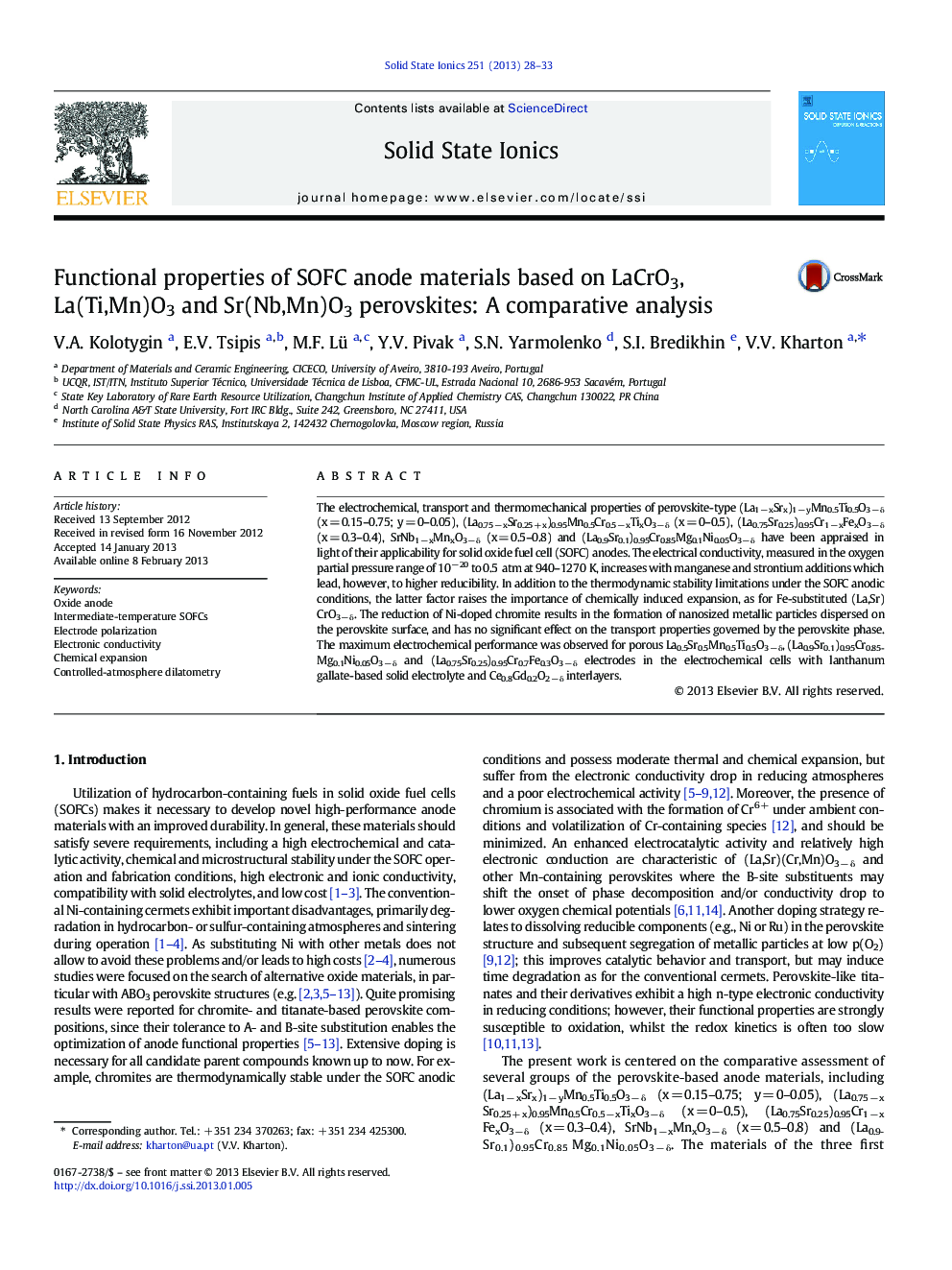| Article ID | Journal | Published Year | Pages | File Type |
|---|---|---|---|---|
| 1295766 | Solid State Ionics | 2013 | 6 Pages |
The electrochemical, transport and thermomechanical properties of perovskite-type (La1 − xSrx)1 − yMn0.5Ti0.5O3 − δ (x = 0.15–0.75; y = 0–0.05), (La0.75 − xSr0.25 + x)0.95Mn0.5Cr0.5 − xTixO3 − δ (x = 0–0.5), (La0.75Sr0.25)0.95Cr1 − xFexO3 − δ (x = 0.3–0.4), SrNb1 − xMnxO3 − δ (x = 0.5–0.8) and (La0.9Sr0.1)0.95Cr0.85Mg0.1Ni0.05O3 − δ have been appraised in light of their applicability for solid oxide fuel cell (SOFC) anodes. The electrical conductivity, measured in the oxygen partial pressure range of 10− 20 to 0.5 atm at 940–1270 K, increases with manganese and strontium additions which lead, however, to higher reducibility. In addition to the thermodynamic stability limitations under the SOFC anodic conditions, the latter factor raises the importance of chemically induced expansion, as for Fe-substituted (La,Sr)CrO3 − δ. The reduction of Ni-doped chromite results in the formation of nanosized metallic particles dispersed on the perovskite surface, and has no significant effect on the transport properties governed by the perovskite phase. The maximum electrochemical performance was observed for porous La0.5Sr0.5Mn0.5Ti0.5O3 − δ, (La0.9Sr0.1)0.95Cr0.85Mg0.1Ni0.05O3 − δ and (La0.75Sr0.25)0.95Cr0.7Fe0.3O3 − δ electrodes in the electrochemical cells with lanthanum gallate-based solid electrolyte and Ce0.8Gd0.2O2 − δ interlayers.
► A series of perovskite-related oxide materials were tested as potential SOFC anodes. ► The oxygen partial pressure dependencies of total conductivity were analyzed. ► Reducibility and chemical contribution to thermal expansion increases with Sr and Mn additions. ► Ni-containing chromite anode forms nanosized metallic particles spread on the oxide surface. ► Correlation between electrochemical activity and electronic conductivity is discussed.
